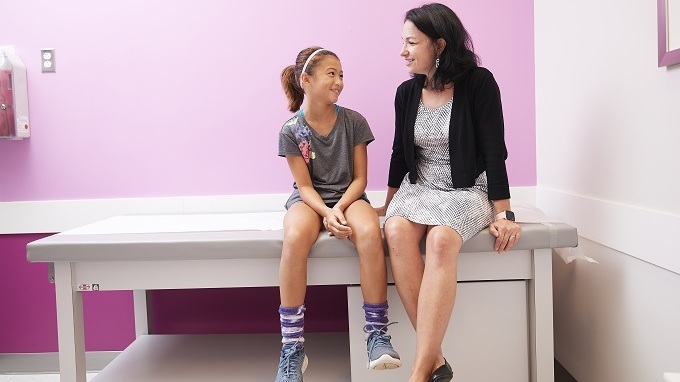Research In Action
Research In Action
Breadcrumb

Unintentional injuries remain a leading cause of disability and death for children and adolescents, and counseling remains a cornerstone of prevention efforts in the clinical setting. However, due to time-limited patient encounters and administrative demands, pediatric healthcare providers face increasing challenges in providing this critical education. With a team of researchers from Children’s Hospital of Philadelphia (CHOP), I recently published a study in Clinical Pediatrics that shares how both providers and trainees perceive and deliver injury prevention counseling.
Through our survey of 208 healthcare providers and trainees in acute and primary care settings across the CHOP network, we also aimed to identify alternative resources and workflows that could be helpful in assisting them with counseling in our increasingly technology-driven world.
Educating the Next Generation
Before starting my postgraduate medical training, I worked at the Center for Injury Research and Policy at Nationwide Children’s on a number of projects. While there, I soon discovered that although policy and advocacy were essential in preventing child injury, education remained the backbone of prevention efforts. While in residency at CHOP, I also discovered that not only was it difficult to deliver injury prevention counseling due to time constraints, but also to acquire that knowledge amidst other training demands. I wondered how my peers perceived the injury prevention education they received, which led to this study.
Although not surprising, our findings highlight the importance of adequate medical trainee education:
- Medical trainees were not as comfortable in providing counseling and counseled less frequently on unintentional injury topics than more seasoned acute and primary care providers (PCPs).
- Medical trainees were less knowledgeable on injury-related American Academy of Pediatrics (AAP) Policy Statements than their acute and primary care colleagues
- A review of the scientific literature revealed that medical trainees receive minimal exposure to injury prevention topics, despite calls for more formalized injury control curricula by the Association of American Medical Colleges and the Centers for Disease Control.
Beyond Back to Sleep Successes
Because prior studies focused on describing injury counseling practices and perceptions for only a single injury prevention topic or a few at most, our survey uncovered several striking findings:
- Providers were well-versed in sudden infant death syndrome (SIDS) prevention and sleep safety counseling, with 94% of PCPs and residents always or often counseling on the topic and 74% knowledgeable about the AAP Policy Statement on SIDS and other sleep-related infant deaths.
- In contrast, counseling rates for injury prevention topics, such as teen driving safety, water safety, and poison prevention, were in the 40-60% percent range, with less than half knowledgeable about the AAP Policy Statements on these topics.
- Providers were least experienced with pedestrian safety. Only 16% of PCPs and residents often or always counsel on the topic, and only 16.8% of all providers were knowledgeable about the topic’s AAP policy statement.
The high self-reported counseling rates and knowledge on sleep safety by providers are likely, in part, due to the AAP’s Back to Sleep campaign. With motor vehicle crashes the leading cause of death for children over age 5, there’s an urgent need to expand the focus of injury prevention counseling “beyond” back to sleep to include teen driving safety and pedestrian safety.
Alternative Resources to Assist Providers
Providers also highlighted alternative technologies, workflows, and alternative personnel that could be potentially helpful in providing injury prevention counseling:
- When asked to rank suitability of alternative personnel to provide counseling, 63% believe a dedicated injury prevention specialist is best suited, with one-third recommending a nurse for consideration in this role.
- 76% of providers consider a family’s use of an office-based tablet or mobile device prior to the visit a helpful resource.
- About half (51.4%) consider referral to a family’s personal device (mobile phone, tablet) as a helpful resource.
These findings underscore provider interest and willingness to adopt novel resources and workflows to assist them in counseling families. Though further research is needed to determine which approaches are effective and how best to integrate them into practice, such efforts are already underway at CHOP, including improving primary care provider practices in youth concussion management. It’s exciting to see what we can accomplish in the future.

